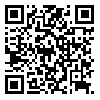BibTeX | RIS | EndNote | Medlars | ProCite | Reference Manager | RefWorks
Send citation to:
URL: http://jdisabilstud.org/article-1-1820-fa.html

 ، شهرزاد سپه پور2
، شهرزاد سپه پور2 
 ، حسن احدی3
، حسن احدی3 
 ، احمد عابدی1
، احمد عابدی1 

2- دانشگاه آزاد اسلامی، واحد اصفهان (خوراسگان)
3- گروه روانشناسی دانشگاه آزاد (واحد علوم و تحقیقات)
زمینه و هدف: والدین و معلمان میتوانند با برنامههای گامبهگام معین، نقش بسزایی در ایجاد محیط غنی و تحریکات مناسب برای سیستم عصبی داشته باشند. پژوهش حاضر با هدف تدوین بستهٔ آموزشی سیوسه پل و بررسی اثربخشی آن بر هوش کودکان ۴تا۶سالهٔ ایرانی انجام شد.
روشبررسی: روش این پژوهش، شبهآزمایشی با طرح پیشآزمون، پسآزمون با پیگیری با گروه گواه بود. بدینمنظور از مقیاس هوش وکسلر برای کودکان پیشدبستانی و دبستانی-ویرایش سوم (وکسلر، ۱۹۶۷) استفاده شد. جامعهٔ آماری را تمامی کودکان ۴تا۶ سال تشکیل دادند که در مهدکودکها و پیشدبستانیهای مناطق ۲۲گانهٔ تهران در سال تحصیلی ۹۵-۱۳۹۴ثبتنام کردند. نمونهگیری بهشیوهٔ خوشهای چندمرحلهای انجام گرفت و دو مهدکودک و پیشدبستانی در نظر گرفته شد. سی کودک بهطور تصادفی انتخاب شدند و در گروه آزمایش (پانزده نفر) و گروه گواه (پانزده نفر) قرار گرفتند. صرفاً گروه آزمایش دوازده جلسه برنامهٔ آموزشی بومی سیوسه پل را دریافت کرد. دادهها با استفاده از روش تحلیل واریانس با اندازهگیری مکرر و آزمون تعقیبی بونفرونی در نرمافزار SPSS در سطح معناداری ۰٫۰۵ تجزیهوتحلیل شد.
یافتهها: اثر گروه بر متغیرهای هوش (کل) (۰٫۰۳۰=p) و هوش کلامی و هوش عملی (۰٫۰۰۱>p) معنادار بود. اثر زمان بر هر سه متغیر مذکور معنادار بود (۰٫۰۰۱>p). اثر متقابل زمان و گروه بر متغیر هوش (کل) معنادار نبود (۰٫۱۷۷=p)؛ اما بر متغیرهای هوش کلامی (۰٫۰۰۱>p) و هوش عملی (۰٫۰۴۳=p) معنادار بود. همچنین میانگین نمرات هر سه متغیر مذکور، در پیشآزمون با میانگین نمرات این متغیرها در پسآزمون و پیگیری تفاوت معناداری داشت (۰٫۰۰۱>p). میانگین نمرات هوش (کل) (۰٫۰۴۸=p) و هوش کلامی (۰٫۰۰۱>p) در پسآزمون با مرحلۀ پیگیری تفاوت معناداری را نشان داد؛ اما میانگین نمرات هوش عملی در پسآزمون با پیگیری تفاوت معناداری را نشان نداد (۰٫۲۷۹=p).
نتیجهگیری: باتوجه به یافتههای پژوهش نتیجه گرفته میشود که میتوان از بستهٔ آموزشی بومی سیوسه پل برای افزایش نمرات هوش کودکان ۴تا۶ سال استفاده کرد.
| بازنشر اطلاعات | |
 |
این مقاله تحت شرایط Creative Commons Attribution-NonCommercial 4.0 International License قابل بازنشر است. |




